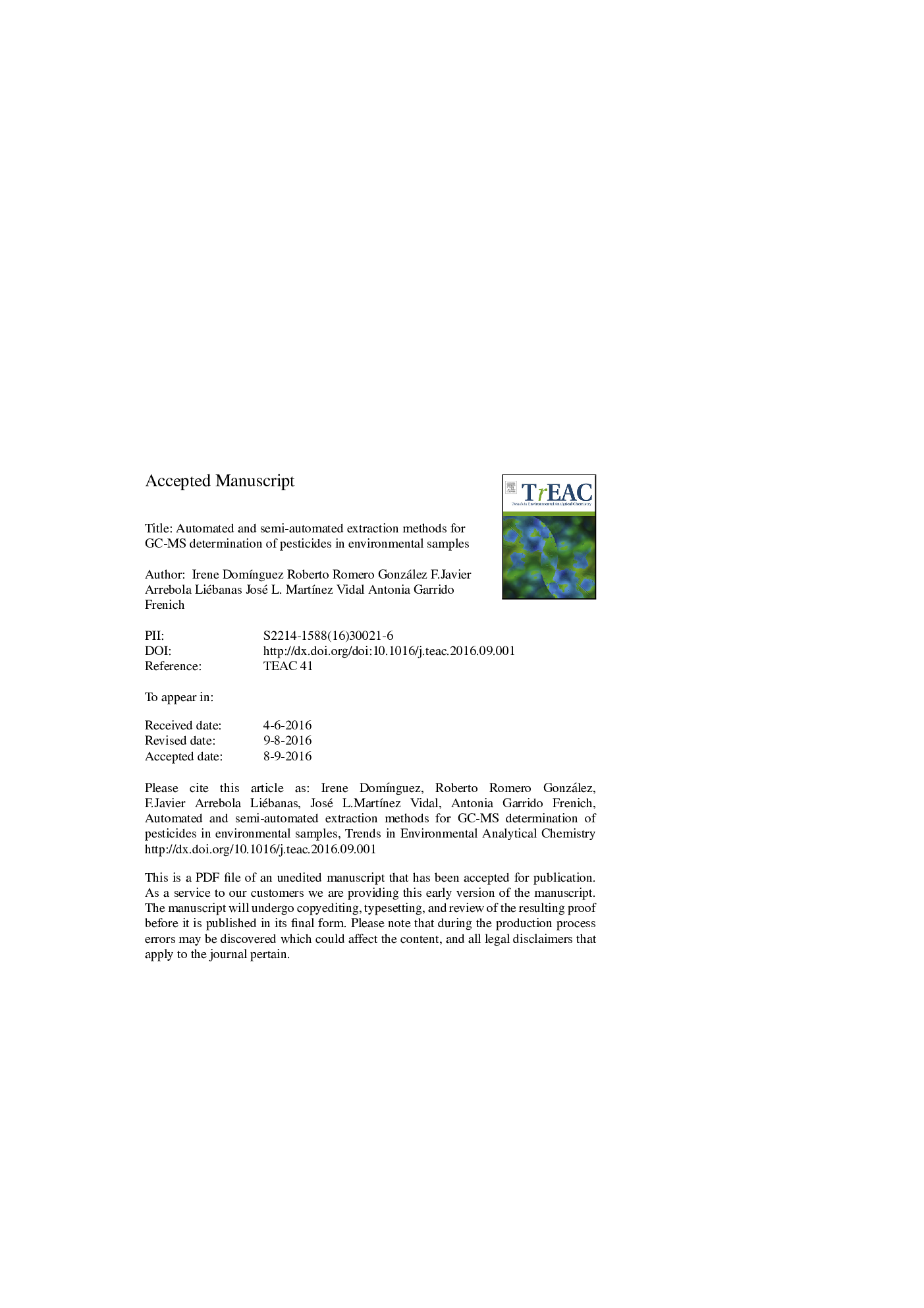| Article ID | Journal | Published Year | Pages | File Type |
|---|---|---|---|---|
| 5141841 | Trends in Environmental Analytical Chemistry | 2016 | 39 Pages |
Abstract
A highly efficient extraction of analytes is crucial for the determination of pesticides in environmental samples at ultra-trace levels. In order to reduce sample handling and improve analysis productivity, extraction methods should be automated. However, fully automation is not always possible. In the present review, the use of automated and semi-automated extraction procedures coupled to gas chromatography mass spectrometry (GG-MS) for the determination of pesticides in environmental samples are revised, highlighting their advantages as well as their disadvantages. Among automated or semi-automated extraction techniques, solid phase microextraction (SPME) is the most widely used methodology for the determination of pesticides in environmental samples. In addition, analytical methods based on automated solid phase extraction (SPE) or extraction procedures requiring minimal sample handling, such as stir bar sorptive extraction (SBSE) and liquid phase microextraction (LPME) procedures, have also been coupled to GC-MS and applied for the determination of pesticides in environmental samples. Therefore, methodologies based on these extraction techniques are also considered in this paper. The combination of these procedures with GC-MS has allowed the determination of pesticides with acceptable relative recoveries (>70% in most cases) and low limits of detection (LOD), in the range of few μg Lâ1-ng Lâ1. Nevertheless, increased efforts aimed at achieving the highest possible recoveries and lowest LOD values, as well as the complete automation of the analytical techniques, are still required.
Keywords
TOFDVBLPMESPEWPDQuEChERSSBSEMRMOPPsEPASISSDMEQqQPIMHRMSDHFMIDQuadrupolePDMSSRMCarboxenSPMELOQPTVATDGC–MSOCPsOrganochlorine pesticidespesticidesEnvironmental Protection AgencyEuropean UnionOrganophosphorousStir bar sorptive extractionAutomated extractionSolid phase extractionHollow fiberSolid phase microextractionLiquid phase microextractionIon trapLow thermal massSingle drop microextractionLOD یا Limit of detectionWater Framework DirectivePROSPEKTThermal desorptiondivinylbenzenetime of flightquick, easy, cheap, effective, rugged and safeOrganophosphorous pesticidesSIMMass spectrometryHigh resolution mass spectrometryDirect immersionHead spaceCARLTDlimit of quantificationlimit of detectionselected reaction monitoringselected ion monitoringmultiple reaction monitoringEnvironmental samplesPolyacrylatepolyethylene glycolPEGPolydimethylsiloxaneTriple quadrupolecarbowaxGas chromatography
Related Topics
Physical Sciences and Engineering
Chemistry
Analytical Chemistry
Authors
Irene DomÃnguez, Roberto Romero González, F. Javier Arrebola Liébanas, José L. MartÃnez Vidal, Antonia Garrido Frenich,
